
Welcome to T3's review of the Witt ETNA Rotante, an outdoor gas-fired pizza oven that features a revolving pizza stone for a perfect bake.
I’d like to think that, after 35 years or so of writing about consumer products, I’m pretty good at spotting where products could be improved. I even like to think of myself as a bit of an inventor, albeit a failed one. I’ve reviewed many pizza ovens in the past – most of which you can read about in T3’s guide to the best pizza ovens – and at no time while burning my hand trying to turn a pizza midway through its baking process have I thought to myself: "you know what this model needs – a revolving pizza stone. And while they’re at it they could bung another heat source below the stone so the base gets a good seeing to". We’re all budding inventors really, but it takes a Dane to perfect it.
That’s certainly the case with the Witt ETNA Rotante which has impressed me in all regards, even if I did make a hash of my first pizza baking attempt.
Witt ETNA Rotante pizza oven review: design
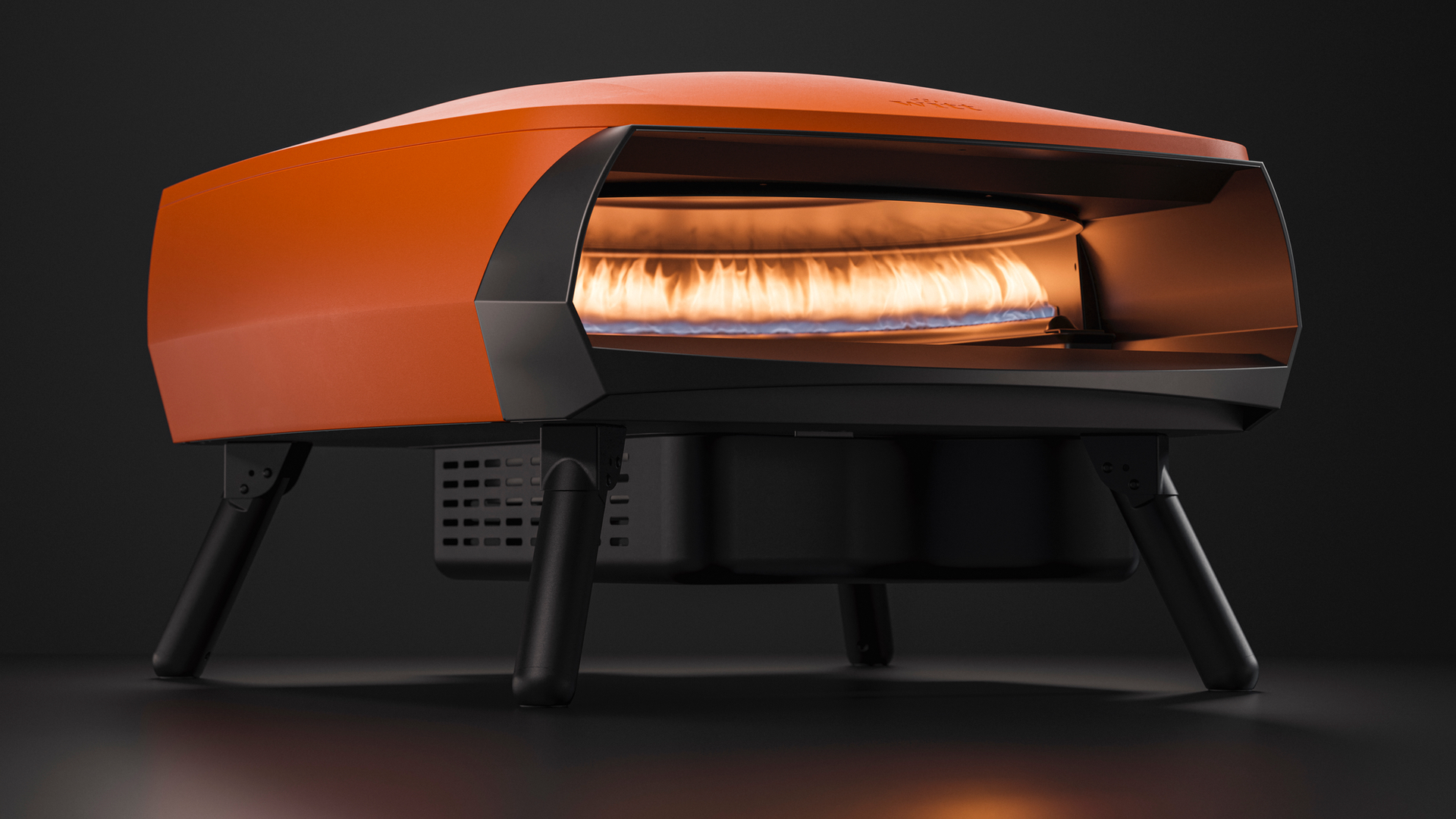
You won’t mistake this oven when you see it. Aside from being huge – it’s 63.3cm wide, 43.6cm tall and 76.1cm in depth – it’s blooming heavy too. 40kgs heavy to be exact. And that unequivocally makes it impossible to lift or carry on your own – unless you’re a gorilla. So, make sure you have an extra pair of hands to get it out of the box and carry it to your table of choice.
The reason the Rotante is so big is because the cordierite stone that comes with it is large enough to accommodate a 16-inch pizza (40.5cm) – four inches wider than the norm. Aside from the Ooni Karu 16 and Gozney Dome, very few consumer ovens use a 16-inch stone, presumably because most consumers are incapable of stretching a 16-inch base without some kind of disaster unfolding.
Where a 16-inch stone bears dividends is when our ill-fated attempts at stretching out a 12-inch pizza actually turns out to be nearer 13 inches – and that’s too big for a standard 12-inch pizza stone. Also, a 16-inch stone lets you bake two smaller 6-inch pizzas at once if you so wish, or even several garlic breads using standard pizza dough. Anyway, once you’ve got the hang of stretching a 12-inch pizza dough ball to a gossamer thin level without it breaking, you will eventually master the art of taking the stretch even further towards that magic 16 inches. Plenty of reasons, then, to invest in a wide-mouthed model like this.

Most pizza ovens look very similar in that they all have wide shallow bodies and big gaping mouths. Nevertheless, I have to say that, along with the chunkier Gozney Dome, this one is a genuine sight to behold. Available in four beautifully finished matte colours – graphite, stone, black and the delicious orange version I received – the ETNA Rotante is unquestionably one of the loveliest looking pizza ovens on the market, which is hardly surprising given its Scandinavian roots. I also like the extra crescent-shaped stone that fits to the front of the oven leaving a centimetre of space between it and the revolving stone just behind it, which I shall get to in the next chapter.
The ETNA Rotante is designed for standard table-top use and it comes with four sturdy fold-out legs for that reason. Just be sure get some help when setting it up because pizza stones are very delicate and can easily crack if the oven is violently jolted.
Being gas powered, the ETNA Rotante thankfully comes with a fitted regulator. However, in my case it turned out to be the wrong model for my Patio Gas propane bottle. A quick trip to B&Q solved the issue.
Witt ETNA Rotante pizza oven review: revolving pizza stone
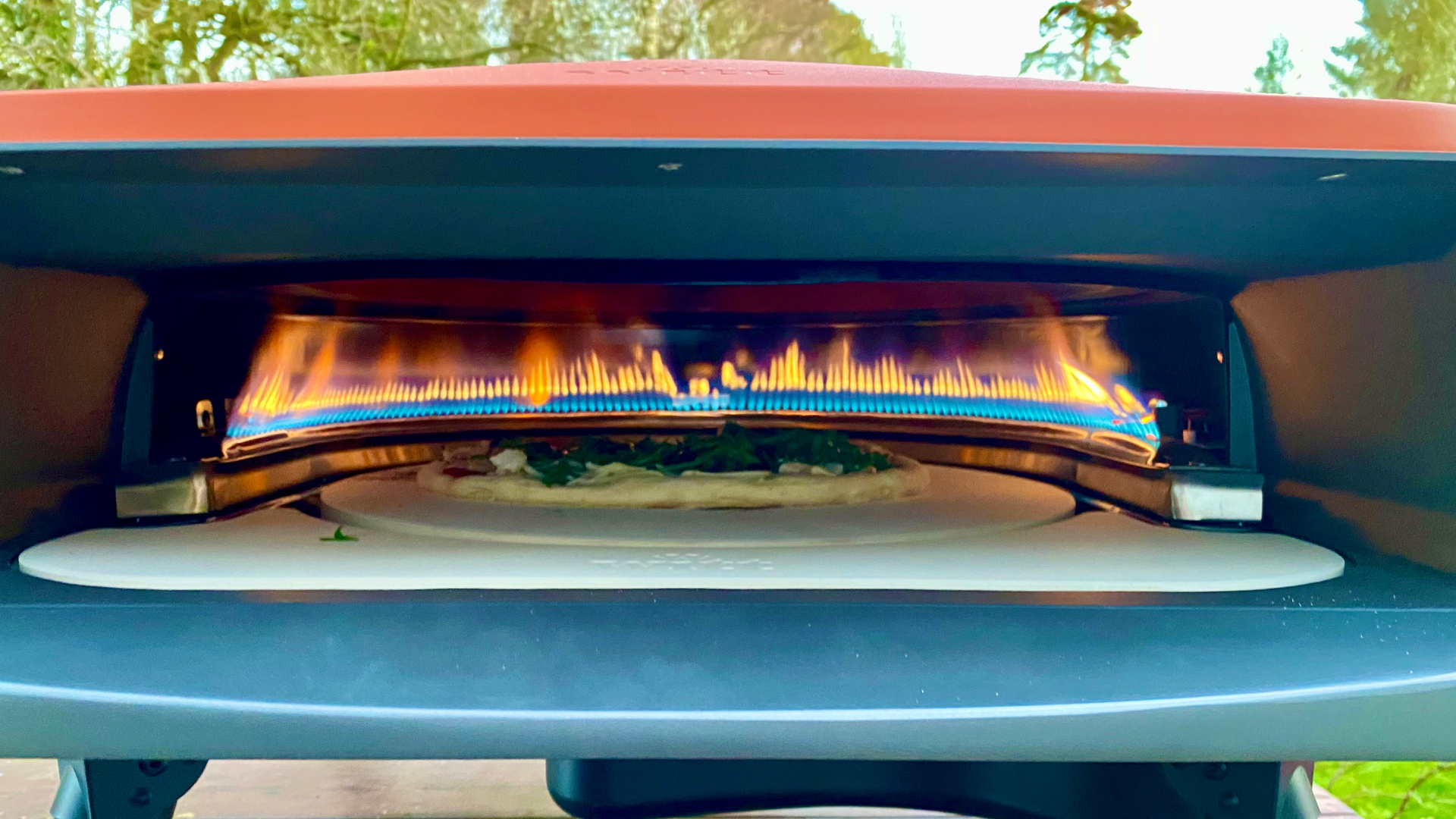
If you’ve ever made a pizza using fresh dough, you’ll know all too well that it will need turning a number of times during its 90-120-second baking session. This is because the source of heat is usually near the back or, as in this case, around the back and sides. As a consequence, the rear end of the pizza will cook much more quickly than the front, hence the turning procedure.
However, turning a pizza isn’t as easy as the pros make it look. Firstly, they use a small circular peel which makes the job easier. Secondly, they have something that you can’t buy – technique. Since most of us mortals don’t have such skills, we find the art of turning a pizza rather tricky which can sometimes lead to disastrous consequences, like the pizza being pushed towards the rear where it could easily catch fire. This has happened to me on a number of occasions.
Praise, then, to the Danes for coming up with the simple but ingenious concept of a revolving pizza stone that does all the turning for you. To activate the stone, simply tap the button on the side and the stone will slowly revolve until you turn it off again. All I would suggest is that you place the pizza in the centre of the stone or it will head off towards the rear of the oven where it may burn.
Since the motor uses battery power (four AAs), there is no need for an outdoor mains socket. Sometimes the simplest innovations are best.
Witt ETNA Rotante pizza oven review: two burners instead of one
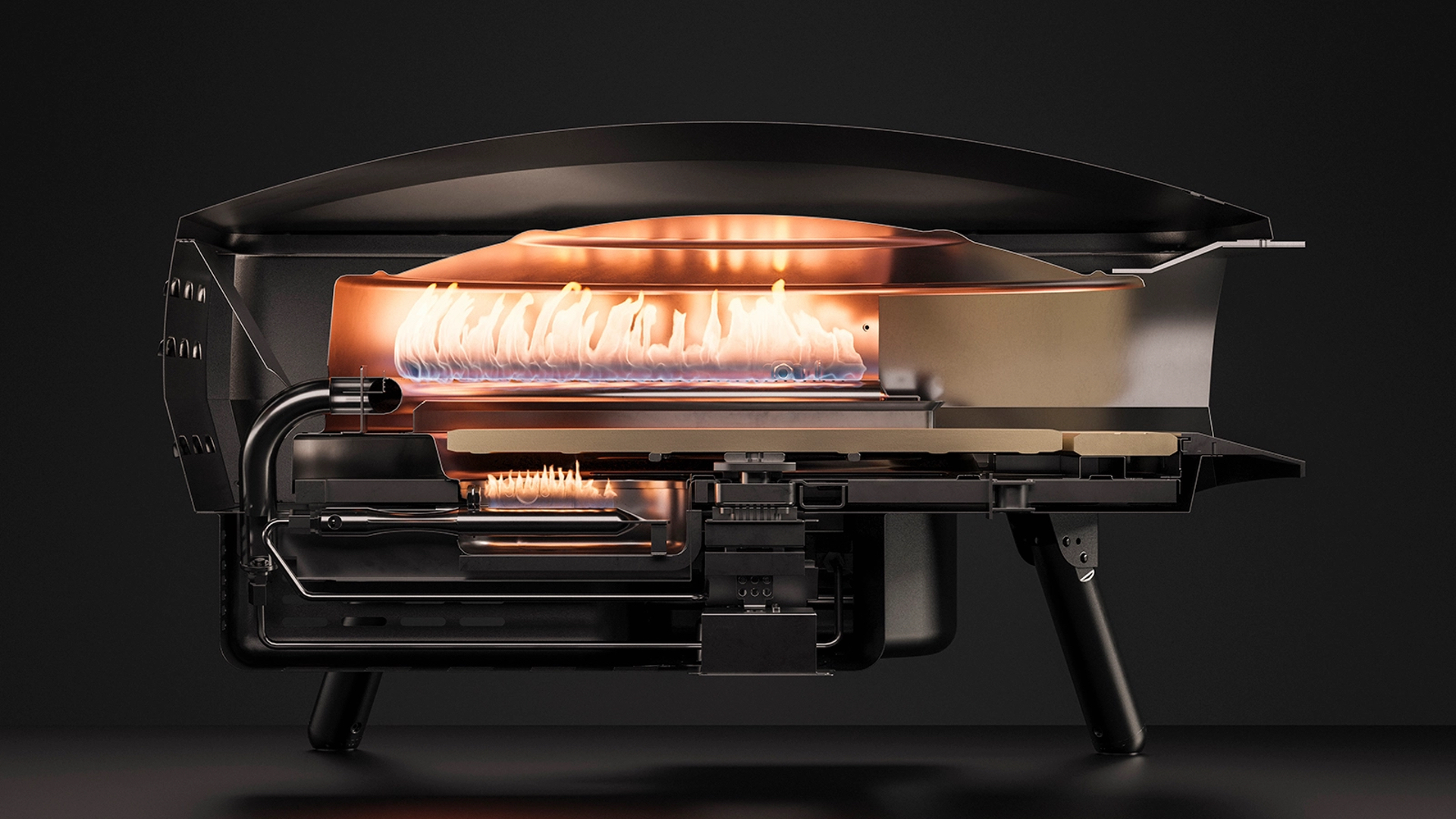
Every gas-fired consumer-grade pizza oven on the market comprises a single burner set towards the rear of the oven. Some cheaper models use a single or double flame that envelopes the top of the oven while more expensive models will have a semi circular burner positioned at the rear of the oven and about halfway along the sides. The ETNA Rotante uses this type of system but the curtain of flame it produces is much more consistent along its entire path than other models I’ve tested. There are few dead patches – just one long uniform curtain of flame that’s about two inches in height. This not only ensures that the pizza crust is evenly baked but that the heat it creates overlaps the pizza so the toppings are perfectly cooked, too.
However, this oven differs from every other gas model I know of by dint of a second burner beneath the stone. This is another ingenious coup that genuinely improves the quality of the base while helping the oven to heat up much more quickly.
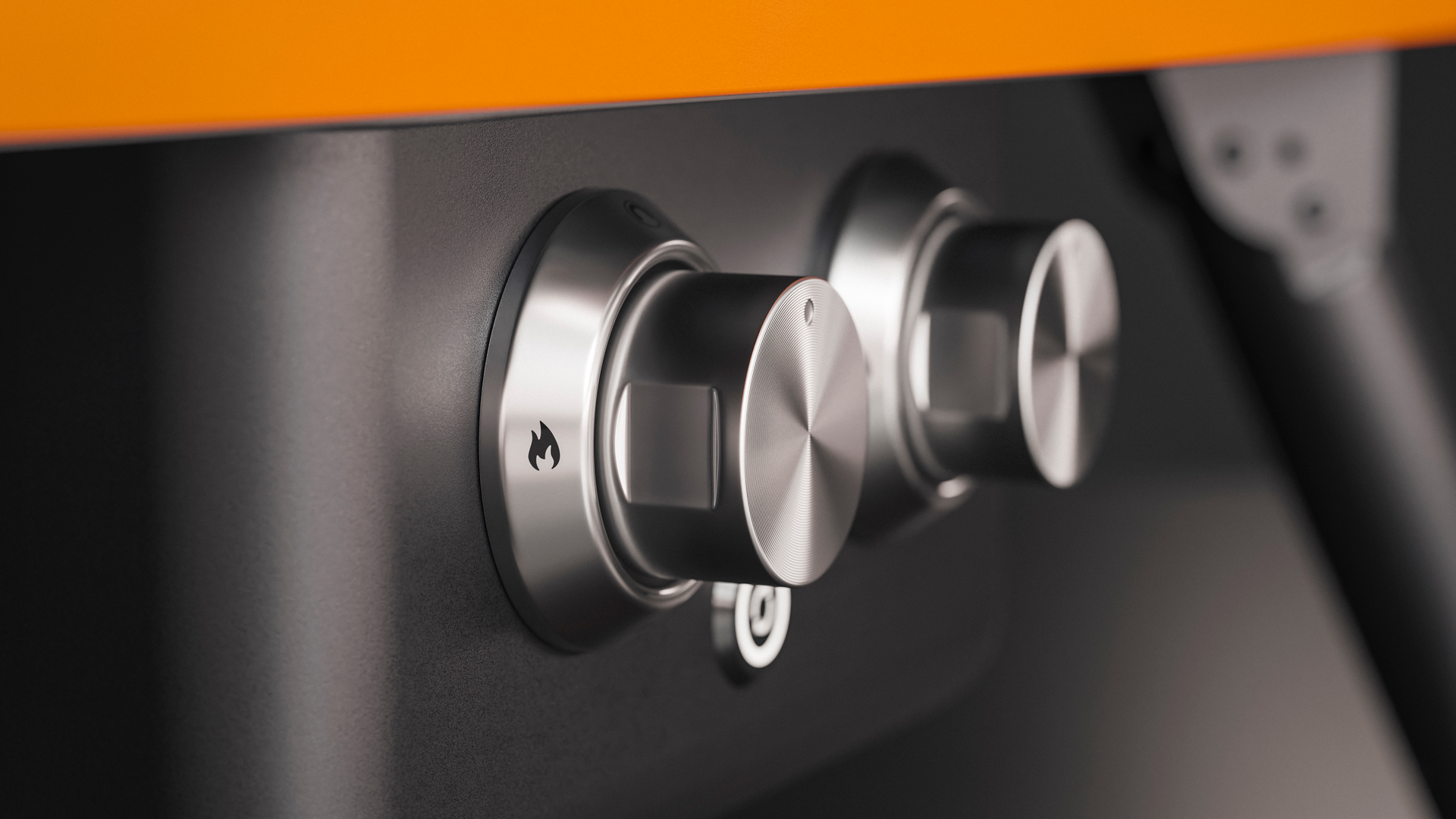
Witt says the Rotante will reach optimum baking temperature of around 400˚C in about 15 minutes. Since my test was performed in an outdoor temperature of around 7˚C, it took up to 30 minutes for the internal temperature to reach baking readiness but this is the norm with any outdoor pizza oven that doesn’t have a door to shut off the oven’s gaping mouth. Some companies like Ooni get around this by providing a removable door and it would be good to see Witt produce some kind of door for the Rotante in the future.
The only issue I had with the under-stone burner was not being able to tell if it was actually on as you can’t see the flame. I suggest you light the stone burner first and listen for the ‘woomph’ sound on ignition. Then turn on the top burner which is clearly visible. That little foible aside, there’s no question that two burners are better than one. A second burner not only ensures that the stone remains hot when you place a cold pizza base on it, but both the top and the bottom of the pizza are cooked more evenly. Top marks in this respect.
Witt ETNA Rotante pizza oven review: performance
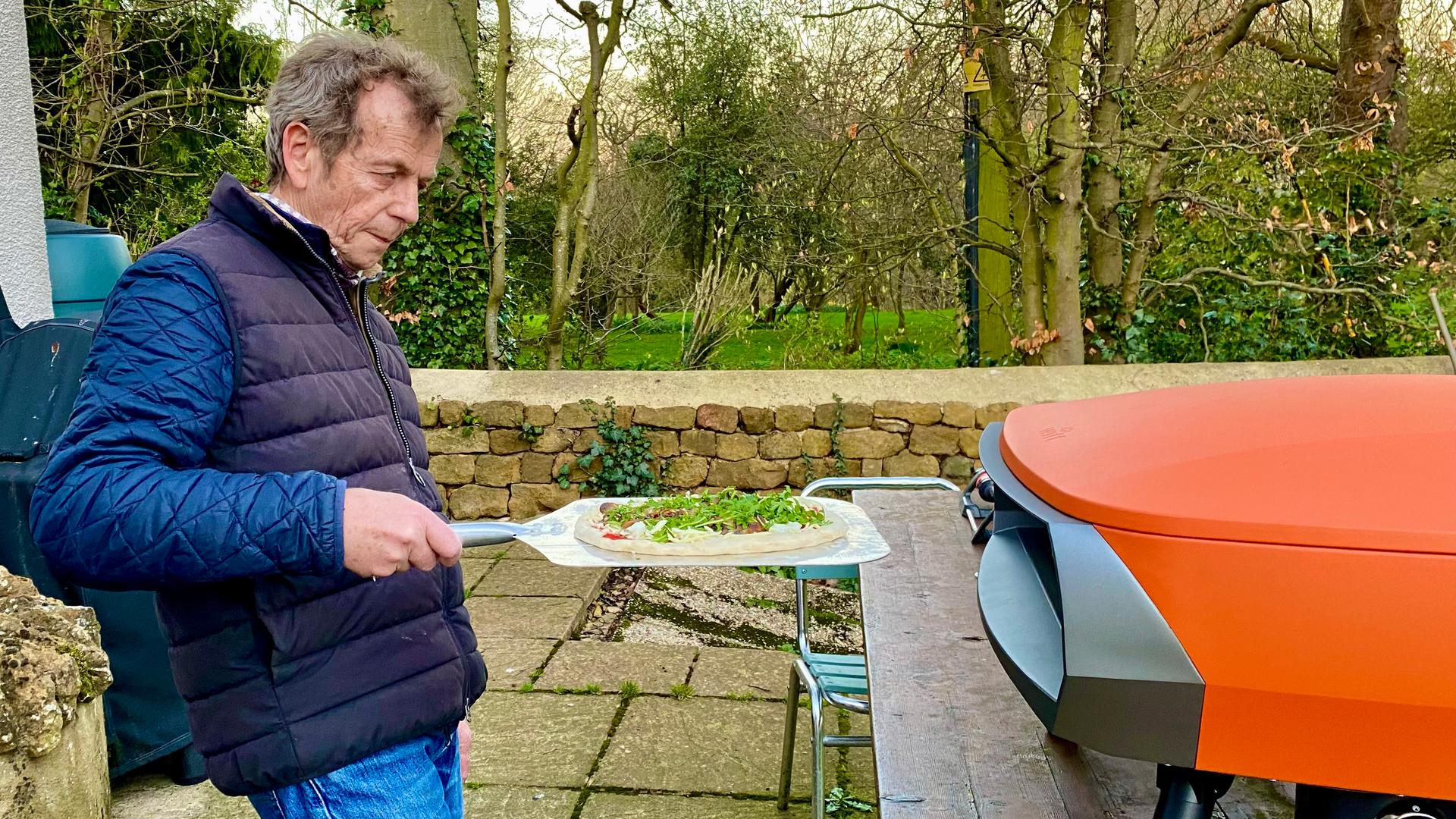
Even though I’ve made many pizzas at home, usually using pre-made dough I buy from Gozney – which, incidentally, you can read about in my how to bake a pizza at home guide – I’ve been known to still cock things up from time to time. And this oven was no different when it came time to producing my first pizza in it.
In short, I should have turned down the flame once the oven had reached temperature but didn’t, so my first attempt burned quite badly around the edge. Nevertheless, I’m happy to report that my second attempt went very smoothly. The base was perfectly cooked and just on the right side of dusty beige while the crust displayed a beautiful array of leopard spots with evidence of only light burning around the edges, which is how it should be. The ingredients were also cooked to perfection.

With both burners on, the Rotante heats up very rapidly and the mouth of the oven is nice and wide making it easy to shove in the pizza. The revolving stone is a genuine blessing if you’re not well versed in the art of turning a pizza and both gas controls are really easy to use and very well calibrated to provide subtle adjustments to the flame.
Witt ETNA Rotante pizza oven review: price
The Witt ETNA Rotante retails for £699 and is available on the Witt website or Amazon. That may seem like a lot of money for a pizza oven but let me tell you that it isn’t. The updated retail price for the electric indoor Sage Pizzaiolo is now £730, the new Ooni Volt 12 electric oven is £799, the same company's Karu 16 Multi-Fuel Pizza Oven is £699 and the Gozney Dome is an eye-watering £1,799. So no, £699 is not expensive for a pizza oven, especially one with this much tantalising onboard tech.
Witt ETNA Rotante pizza oven review: verdict
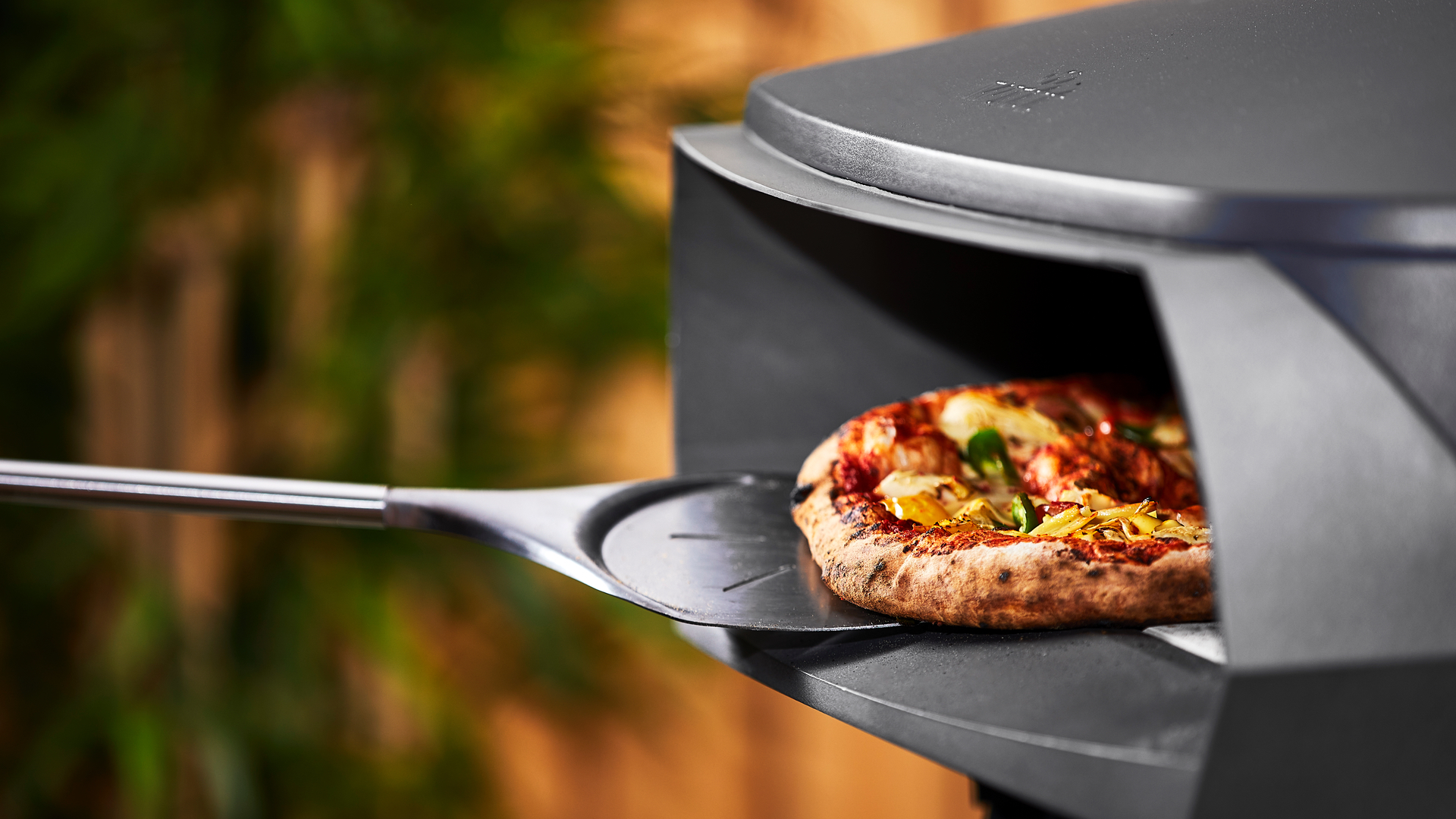
I’ll admit that the ETNA Rotante is much bigger than I expected and impossible to carry on one’s own. But this is par for the course for a 16-inch pizza oven. I in no way blame the Rotante for the mistake I made during my initial test but think you should know that using any pizza oven is much more eye-on-the-ball than any barbecue you’ll ever use. You simply can’t be distracted for even a second or the pizza will transition from ‘nearly there’ to a scorched drain cover in less time than it takes to say "pour me another drink will you".
In the pantheon of home pizza ovens, the Witt ETNA Rotante is a genuinely brilliant addition to the marketplace. The revolving stone is an ingenious innovation, as is the second burner directly beneath the stone. It looks a million quid, too, especially the orange model I received for this review.
Should you buy one? If you think you’ll use it more than, say, ten times a year then absolutely, because you might not find a better-equipped model anywhere for the price. Top ho!
- Here's our guide to the Best Pizza Ovens you can buy in 2023
- And here's our guide on How to Bake a Pizza at Home, with handy links to the best premade pizza dough balls you can buy







